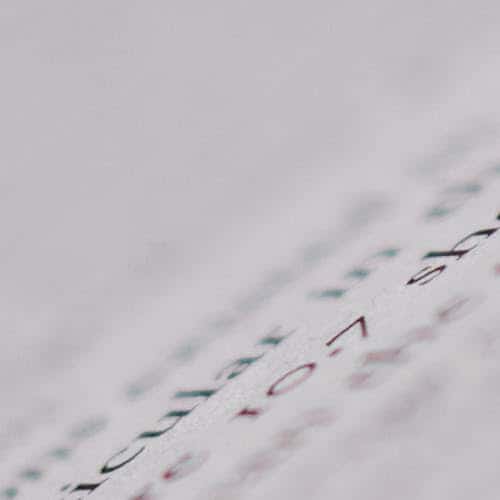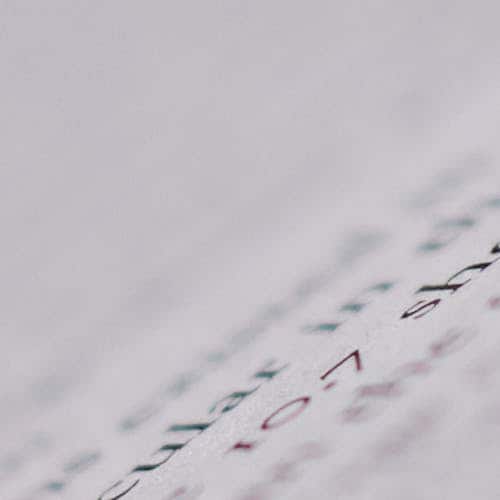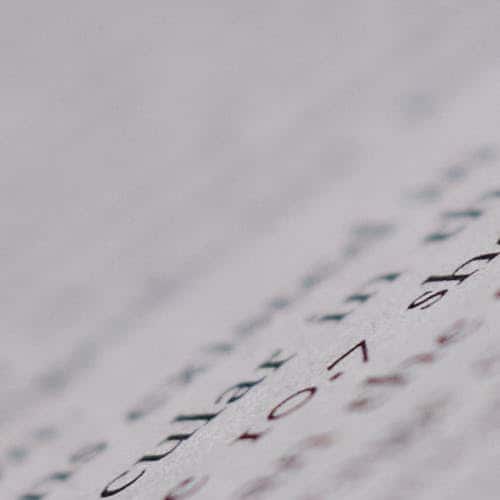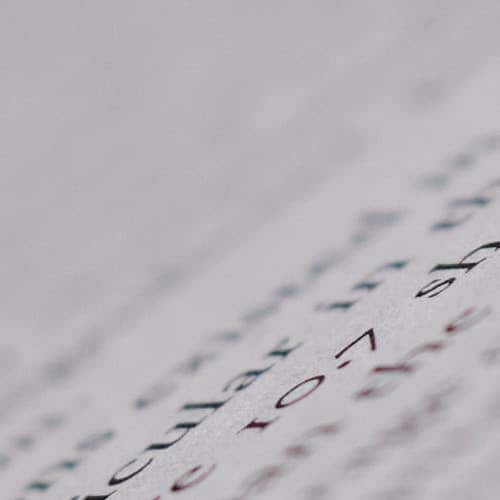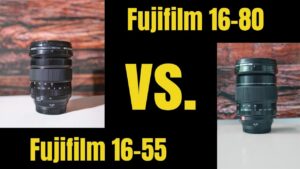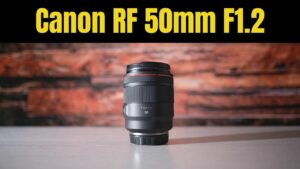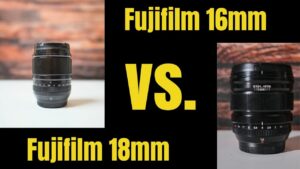Quick Facts about the Fujifilm 50mm F1 WR
- Weight: 1.86 lbs/845 Grams
- Weather Sealed: Yes
- Filter Size: 77mm
- Angle of View: 31.7 Degrees
- Focusing Distance: 2.3 feet/70cm
- Max Aperture: F1
- Minimum Aperture: F16
- Image Stabilization: No
- Mount System: Fuji X
- Price: $1,499
- Maximum Magnification: .08x
Quick Facts about the Fujifilm 56mm F1.2 WR
- Weight: 15.7 oz/445 Grams
- Weather Sealed: Yes
- Filter Size: 67mm
- Angle of View: 28.5 Degrees
- Focusing Distance: 1.6 feet/50cm
- Max Aperture: F1.2
- Minimum Aperture: F16
- Image Stabilization: No
- Mount System: Fuji X
- Price: $999
- Maximum Magnification: .14x
Table of Contents
Why compare the Fujiifilm 50mm F1 and 56mm F1.2 WR?
Since I started my photography journey with Fujifilm in 2021, I have wanted to get ahold of the Fujifilm 50mm F1. After all, there are only a few lenses within the XF Mount that can produce comparable bokeh to more-expensive, full-frame systems, and the Fujifilm 56mm F1.2 was certainly starting to show its age.
Perhaps this was the beginning of my gear acquisition syndrome (but failure to commit due to budget reasons), I never ended up purchasing the lens and traveled the world with my X-T4, the 10-24, and the 55-200.
However, recently Fujifilm decided to announce a refresh of the 56mm F1.2 with weather-resistance, and I decided I would complete these two reviews within the span of a few weeks of each other.
Both lenses are medium-telephoto (75 vs 85mm), have a surprisingly similar lens body shape, and the apertures are almost the same. Additionally, the 50mm F1 is $500 more expensive than the 56mm F1.2 WR, so you have the justify the extreme cost difference.
Before we get into the rest of this comparison review, let’s think about the rest of the lenses offered within this category.
What other Fujifilm lenses cover the 50-ish mm Focal Length
- Fujifilm XF 50mm F2
- Fujifilm 56mm F1.2 (non-WR)
The first version of this lens is slow, but it can be found for less than $500 used. This might make it a steal.
- Fujifilm 56mm F1.2 ADP
Something to do with smoother bokeh… Crazy to think there are three different variations of the same lens within the XF ecosystem. (And it’s only 10 years old!)
The “jack-of-all-trades” for the XF Telephoto zoom options, the 50-140 is the sharpest XF zoom lens I have tested. Additionally, it has a highly effective OIS unit. My only quarrel with this lens is the retail value of $1,599!
The jack of all trades for the telephoto zoom options, the Fujifilm 50-140 is the best-performing lens in regards to sharpness
Dials, Switches, Buttons, and More!
There are not any major dials, switches, or buttons that will keep anyone up at night.
Both lenses have marked aperture rings, manual focus rings towards the end of the lens, and an aperture-lock switch. All of these are standard within the Fujifilm ecosystem.
Build Quality & Balance
The build quality will be excellent for most. The 50mm F1 and 56mm F1.2 WR are made out of similar, if not identical material. It is a metal alloy of some sort.
However, I did feel like the 56mm F1.2 WR was just built to a higher standard. The aperture ring clicked a bit more confidently, the lens felt just a bit more “put together” (piece by piece), and the manual focus ring was more of a pleasant experience on the 56, too.
Both lenses are weather-resistant, and the body design is the same.
Both are chunky lenses that result in a tendency to dwarf some of Fujifilm’s smaller bodies. (X-E and X-TXX lines) So much so, I showed somebody the 50mm F1, and they were kind-of shocked by the size. So, if you are attempting to do street photography, you will want to purchase the 56mm F1.2 WR.
Because the 56mm F1.2 WR is only 445 grams vs the 845 grams of the 50mm F1, you will notice the center of gravity for the 56mm F1.2 is closer to the camera body.
Sharpness Test
In the sharpness test, you will notice that the 56mm F1.2 and 50mm F1 perform about the same from F2 to F8.
However, the value the 56mm F1.2 WR brings is the resolution at the minimum aperture.
Center
- Comparing the lenses at their minimum apertures (F1 vs F1.2), the 56mm F1.2 quickly jumps out as sharper. The 50mm F1 although plenty sharp for most uses, suffers mightily compared to the 56mm F1.2 WR.
- At F1.4, the 56mm is still sharper.
- However, by F2, the 50mm F1 is starting to catch up.
- From F2.8 – F5.6, both the 50mm F1 and 56mm F1.2 perform about the same in the center.
- At F8, we start to see a slight degradation in the image quality with the 50mm F1. I found that this was lest pronounced in the 56mm F1.2 WR.
- At F11, there was no noticeable difference between the two lenses.
- At F16, both lenses fell apart in regards to image quality due to diffraction.
- Again comparing the lenses at the minimum aperture, the 56mm F1.2 is sharper at F1.2 than the 50mm F1.
- The sharpness will continue to outperform until the 50mm F1 catches up around F2.
- Then, the sharpness in the corners is about the same through F8.
- At F11 and F16, the sharpness is the same as the center. No major differences at F11, but there is a major drop in image quality at F16.
Bokeh
The bokeh transitions are going to be good on both lenses. It’s far from busy, and you will be able to separate your subject from the environment with these lenses.
Additionally, I did not see any major difference in the rendering between foreground to subject and subject to background.
If your subject is standing 3 meters away, with the 50mm F1, at F1, you are going to have a depth of field of about .14m.
However, if your subject is standing 3 meters away, with the 56mm F1.2, at F1.2, you are going to have a depth of field of about .13m.
Interesting, right?
Bokeh Balls
At F1, both lenses suffer from the cat’s eye effect in the corners.
The cat’s eye does start to disappear around F2, but this is where another problem sets in for the 50mm F1.
At F2 and beyond, the bokeh balls are nonagonal due to the nine-bladed aperture system. Meanwhile, the eleven-bladed aperture system on the 56mm F1.2 WR allowed the bokeh balls to stay round, longer.
It’s around F4 that the bokeh balls on the 56mm start to gain sharper edges, rendering the bokeh balls less usable.
The 56mm F1.2 WR’s biggest downside is the autofocus speed.
Autofocus Tracking
The tracking on the 56mm F1.2 is slower by less than half a second, but it is much more confident than the 50mm F1.
For the 50mm F1, I didn’t feel like it tracked my face very well, and the X-T4 lost me in the trees a few times.
The slowness of this lens might due to the huge lens elements or something, as you will notice the pulsing while in single-point or wide angle.
You will also notice on the 50mm there is a slight pulsing to find the eye, but the 56mm F1.2 WR performs these autofocus pulls rather smoothly.
Those videos were shot with an X-T4.
Macro Performance
Here is a fun fact. The 56mm F1.2 MK I (the previous version of this lens) had the same focusing distance of the 50mm F1.0.
I don’t believe you will be using either of these lenses for macro photography. However, the 56mm F1.2 WR has a slight edge in this category anyway, as the minimum focusing distance of 50 centimeters lends itself favorable to some.
| Minimum Focus Distance of 56mm F1.2 WR | 1.6′ / 50 cm |
| Maximum Magnification of 56mm F1.2 WR | 0.14x |
| Minimum Focus Distance of 50mm F1 WR | 2.3′ / 70 cm |
| Maximum Magnification of 50mm F1 WR | 0.08x |
Sunstars
Although not a normal focal length to use sunstars in images, call me surprised when I saw the 56mm F1.2 WR was able to produce a prevalent, twelve-point sunstar.
The 50mm F1 fared about as best it could.
Regarding flaring and ghosts, I was amazed at both lens’s ability to keep light from flaring or streaking.
Distortion
The 56mm F1.2 WR suffered from no distortion.
However, the 50mm F1 had some pincushion distortion that most people would not notice.
Other Trade-Offs
Motor Noise
Both lenses had very audible motor noises, which was annoying. I could not use any of the B-Roll for video, unless I was using an external microphone.
The 56mm F1.2 WR is actually louder than the 50mm F1, which is an interesting development. However, once the focus actually locked on the subject/any eye, it became a bit more silent.
Because the 50mm F1 lost focus repeatedly, you will hear the motor.
Color Fringing
The 50mm F1 suffers from color fringing from about F1 until F2.
Meanwhile, the 56mm F1.2 WR might suffer from color fringing, but it clears up by F2.8.
This all being said, I did feel like the color fringing on the 50mm F1 was much more noticeable over the 56mm F1.2 WR.
The 56mm F1.2 WR’s sample photos were zoomed in at over 100%, while the 50mm F1’s were straight out of the camera.
Does F1 versus F1.2 really make a big difference in low-light?
Not really. There’s a much bigger difference between the 50-140 F2.8 and this 56mm F1.2/50mm F1 combination.
For this minimal difference, I would advise most people to just raise their ISO by half a stop. I don’t think I have ever noticed a difference between ISO 800 and 1200, for example.
Here is a picture of the bokeh balls test again, but this time I wanted to let you know that this was shot at 1/250/s, at F1.2, with an ISO of 800, and the environment where I shoot these tests has almost no external lighting.

If you are concerned about the light-gathering capability of any of these lenses, I would actually recommend purchasing an external light.
Why should I pick the 50mm F1.0 over the 56mm F1.2?
- Social Media
- Novelty
If you want to say you own the F1 lens with autofocus. Honestly, not too many people would care.
Why should I pick the 56mm F1.2 over the 5omm F1.0?
- Image Quality
- Price
- Better lens.
My Final Ratings
Fujifilm 50mm F1
Price: 3.5/5
Reliability: 4/5
This lens loses an entire point in the reliability portion.
-.5 is for the autofocus –.5 is for the image sharpness
Functionality: 4/5
We lose -0.5 for the bokeh balls. Also, we lose -0.5 for the manual focusing experience.
Style: 5/5
Total: 16.5/20 or about 82.5%
Am I thankful that I had the opportunity to try this lens out? Yes, absolutely.
Would I purchase this lens? No, I would not.
Fujifilm 56mm F1.2 WR
Price: 5/5
Reliability: 3/5
I hate deducting two points, but I found the autofocus to just make things and life difficult.
Fujifilm is not keeping up with their peers, and it’s starting to show in their lens construction, too.
Functionality: 5/5
85 millimeters is a highly functional lens. Does it create some unnecessary balance on smaller cameras? Yes. Are people going to notice it too much? No.
Style: 5/5
Looks good.
Total: 18/20 or 90%
For Fujifilm photographers, the only downside is the autofocus. Otherwise, this is a perfect lens by Fujifilm.

































